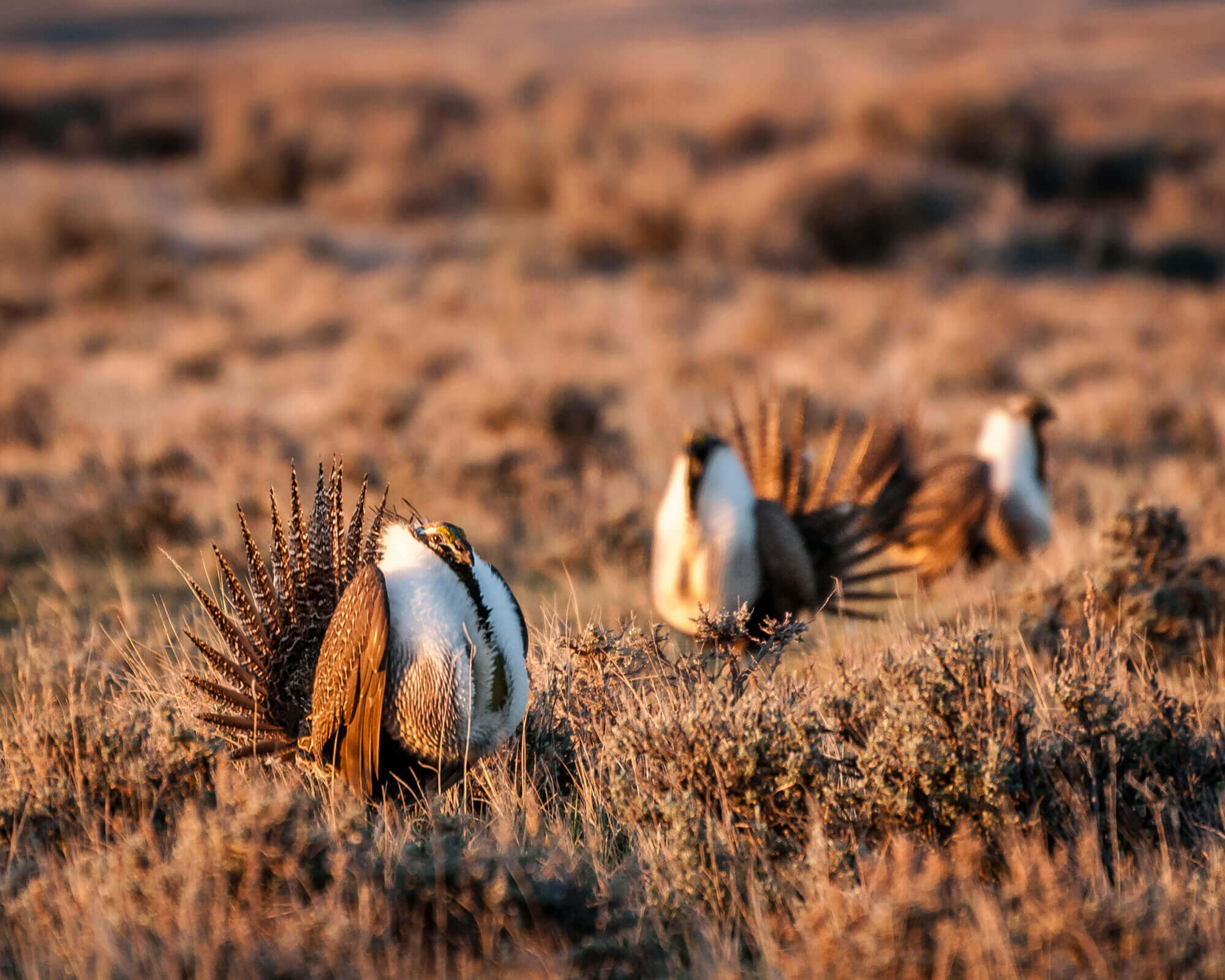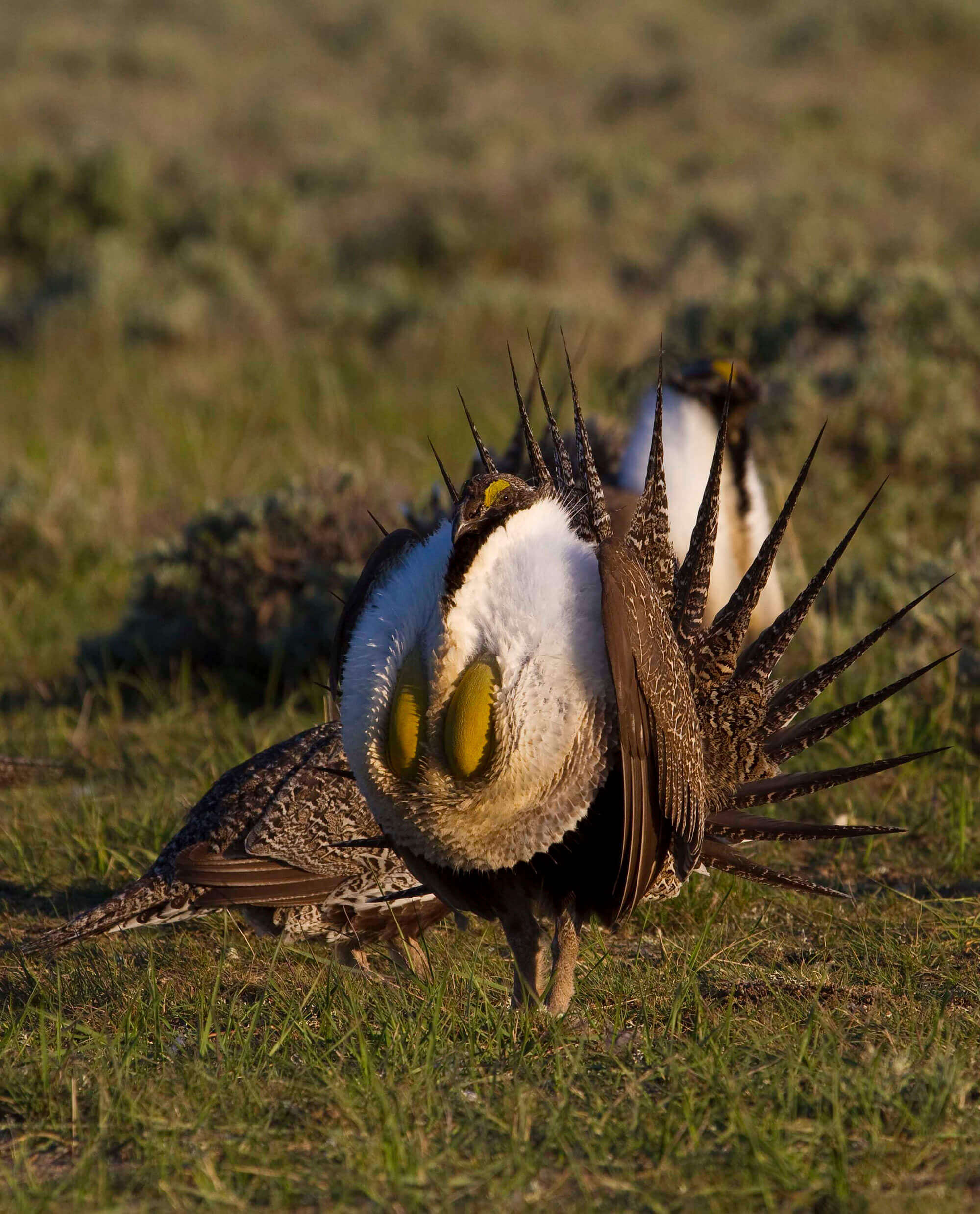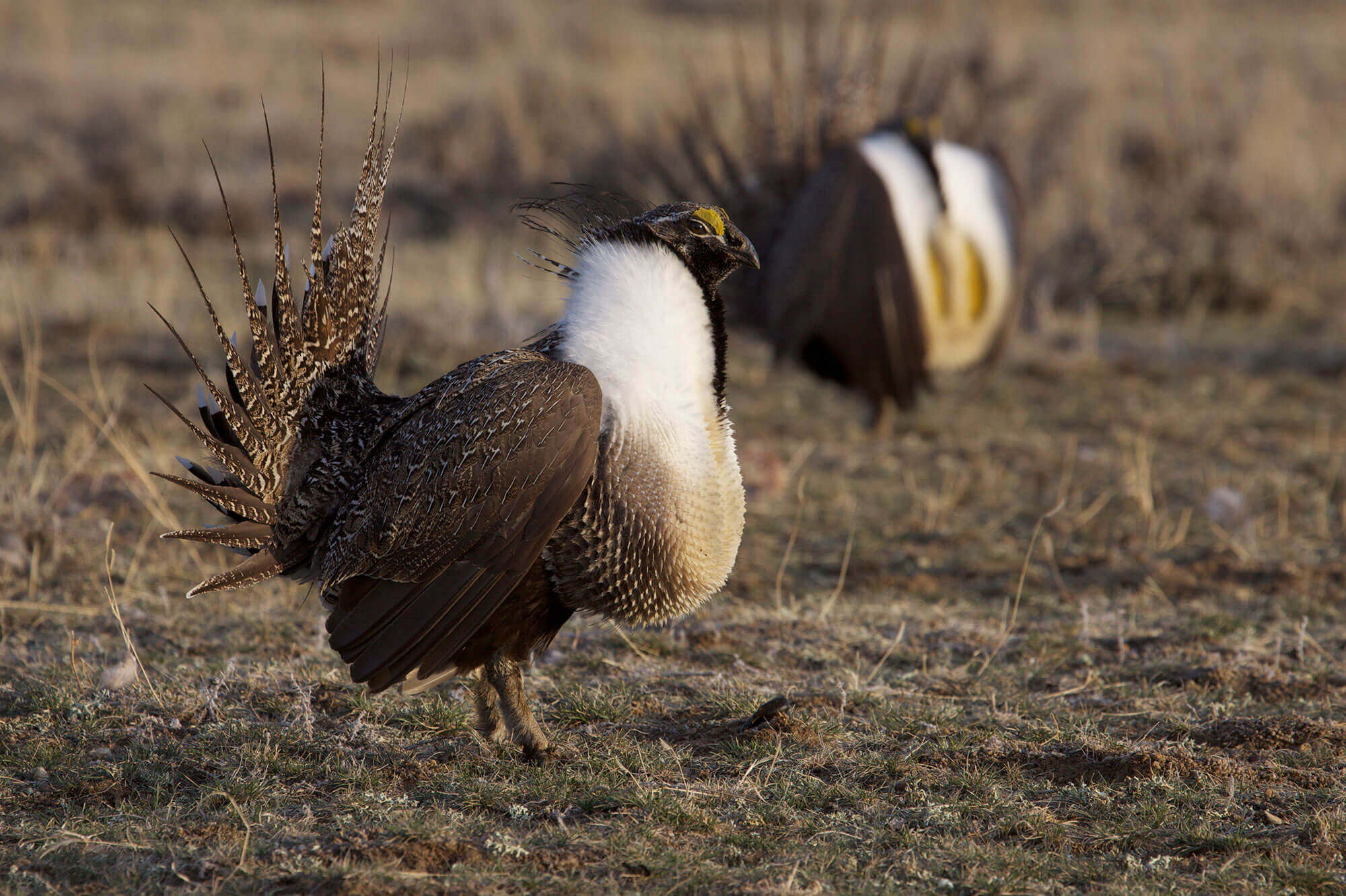Spring on American Prairie means lekking season for grouse.
“Lekking” refers to a mating strategy where males display in a communal space, called a lek, to impress females and find a mate. Sage grouse leks are usually found in open areas surrounded by sage brush. Male sage grouse will puff out their feathers and make unusual calls. It requires roughly a gallon of air for a male sage grouse to make their lekking calls. The competition is high stakes because the most dominant male in any given lek usually mates with around 80% of the group’s females, leaving the majority of male grouse without a mate for the breeding season.
Sage grouse are of particular concern because the population size has been declining to the point that they are near being labeled ‘threatened’ by the IUCN. Sage grouse population numbers have dropped from historical estimates of 16 million to around 200,000 individuals. In September of 2015, the U.S. Fish and Wildlife Service decided not to add greater sage-grouse to the Endangered Species list despite massive population decline, which reinforces the importance of monitoring these populations.
Like many species, a major factor in the decline of sage grouse is the loss and fragmentation of habitat. Sagebrush habitat has been greatly reduced and now exists in only 56 percent of its historic range. Restoration of sage grouse habitat benefits other grassland birds and native prairie species. Observing sage grouse populations is important in studying sagebrush ecosystems because sage grouse are an indicator species, meaning that the status of sage grouse populations is a good reflection of the overall health of the entire sagebrush ecosystem.





